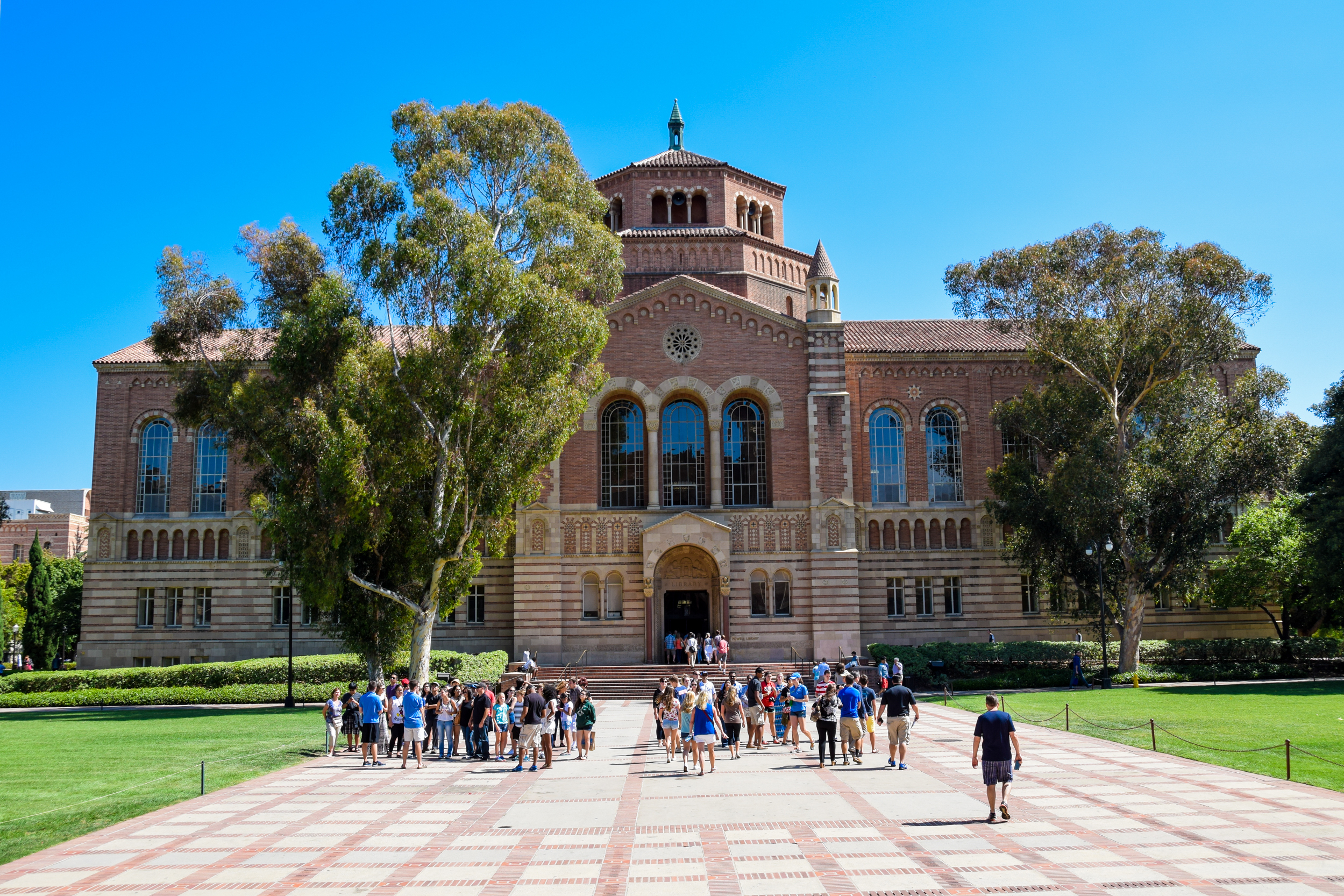June 12, 2017

Affording College: What Are My Payment Options?
The cost of attending college has risen drastically over the past two decades. Since 1995, tuition at public universities has risen by over 296 percent, out of state tuition is up 226 percent, and the cost of attending private universities has risen by 179 percent. The sharp increase in college tuition has left students and their families wondering what the best option is when choosing a college.
For a number of families, a student’s financial aid package may be the deciding factor in whether or not they pursue a college education. As such, it’s crucial that students understand and make the most of their financial aid package in order to lessen the financial burden of college when the time comes.
Free Application for Federal Student Aid (FAFSA) and Scholarships
The FAFSA, formally known as the Free Application for Federal Student Aid, is among one of the first steps that parents and students should tackle when attempting to maximize their financial aid package. Once completed, the FAFSA helps schools to determine how much federal aid they will be able to grant individual students. Once a student receives that information, they can further determine the next steps in their financial aid plan, including applying for grants and scholarships. Below, we further break down the importance of applying for federal financial aid, how to find free scholarship resources, and how to avoid costly scholarship scams.
FAFSA
The FAFSA, short for the Free Application for Federal Student Aid, is an application that families fill out in order to be eligible for federal grants, loans, and work-study funds. A student’s eligibility for federal aid is generally determined by their financial need, as determined by information supplied in their completed FAFSA documents.
Although income is taken into consideration, your income doesn’t necessarily bar you from receiving federal student aid. Since it’s nearly impossible to pinpoint the exact funds for which students are eligible to receive, all families, regardless of income bracket, would do well to apply.
Once completed, your FAFSA information is shared with the colleges and universities listed in your FAFSA application. From there, the financial aid office at each university listed determines how much federal aid you are qualified to receive at that particular institution. From there, the financial aid staff at your college will explain how and when funds will be disbursed and provide any additional information about federal aid, including providing entrance counseling to help students manage their education expenses.
From there, you can determine which schools offer the most competitive financial aid package and make an informed decision about which to attend.
If the price of college is still weighing heavily on your mind or your financial aid package from your dream school wasn’t as robust as you had hoped, it may be worthwhile to appeal your financial aid package. If, for example, you have recently experienced job loss, medical debt, or the death of a loved one, most financial aid offices have procedures in place to help you appeal your financial aid package.
The best practice is to check the financial aid section of the college’s website or call the financial aid office to inquire about the appeal process.
Filling out your FAFSA is the first of many steps you can take in order to maximize your financial aid package, but there are many more ways students can secure funds for school.
Scholarships
The government, colleges, companies, and various individual donors all provide money to help students cover their cost of tuition. One way they provide tuition assistance is through scholarships, which don’t need to be repaid after you stop attending school.
Scholarships can be need or merit based, but are often given to students who meet certain criteria. For example, students with strong academic or athletic talents may receive scholarships for their skills. Students may also receive scholarships for being members of a particular gender or ethnic group, school club, or wish to pursue a specific academic major.
Scholarships vary in amount. Some may cover the entirety of your tuition, while others may just pay for a few meals on campus. Regardless of the amount, however, all are worth applying for if you’re hoping to put a dent in your college tuition cost.
The U.S. Department of Education recommends finding scholarships in the following ways:
- The financial aid office at your chosen college or university
- A TRIO counselor or high school counselor
- The U.S. Department of Labor’s scholarship search tool
- Your local library’s reference section
- Foundations, religious organizations, community groups, civic organizations, or local businesses
- Your employer or your parents’ employers
- Organizations focused on helping disenfranchised youth
- Organizations related to your desired field
- Federal and state grant agencies
The Department of Education also notes that scholarships do affect your other student aid. All student aid added together can’t equal more than the cost of attendance at your specific college. Once you are awarded a scholarship, be sure to let your financial aid officer know, so that the amount can be subtracted from your attendance cost.
Scholarships have long been an attractive way for students to pay for college. Unfortunately, there are a number of services that claim to help students find financial aid that end up being little more than scams. Many companies exist that offer students information about scholarships for a hefty price–some costing more than $1000. While this action isn’t fraudulent in and of itself, if the company can’t deliver the results promised, you’re paying for nothing.
According to the Federal Trade Commission (FTC), there are a number of companies who deceitfully guarantee students financial aid packages, scholarships, or grants. Many of these companies promise to award “scholarships” in exchange for a fee that is to be paid in advance, and pressures students to pay immediately lest they risk on missing out on the opportunity offered. Some of these companies also ask for students checking account information, leaving students at risk for identity theft.
If you’re unsure about whether or not to pay a company for these kinds of services, remember that scholarships are widely available to apply for, and that there are numerous free resources at your disposal during your scholarship search.
In order to best avoid scholarship scams, the FTC recommends that students pay attention to tell-tale signs of a scholarship scam:
- “The scholarship is guaranteed or your money back.”
- “You can’t get this information anywhere else.”
- “I just need your credit card or bank account number to hold this scholarship.”
- “We’ll do all the work. You just pay a processing fee.”
- “The scholarship will cost some money.”
In addition, the FDC recommend that students investigate the organizations they may be considering paying for scholarship services, ask plenty of questions of the company, and talk to a guidance counselor or financial aid representative before spending money on these types of services.
Student Loans
Student loans are a type of loan which is designed to help students pay for college and the associated fees that come with attending school. In the United States, there are two types of student loans: those sponsored by the federal government, and private student loans which are provided by banks or other financial institutions to help students pay for school.
Federal student loans are available through the Federal Direct Loan Program. There are three types of loans available. In addition to federal student loans, students may also choose to explore private lending options to pay for tuition.
Direct Subsidized Loans:
These loans are reserved for students who have demonstrated a financial need which is determined by their FAFSA application. Direct subsidized loans typically have slightly better terms to help students with financial need while they were in school, as students do pay interest while attending college at least part time (6 credits). Students also pay interest during the grace period (typically six months) after students graduate or leave school.
Direct Unsubsidized Loans:
These types of loans are loans not directly tied to financial need. Schools will award unsubsidized loans that are based on the cost of attendance and other financial aid in your package. A fixed interest rate is charged from the moment financial aid is disbursed. Students will be held responsible for paying off all the interest that accrues until the loan balance reaches zero.
Direct Plus Loans:
Direct plus loans are unsubsidized federal loans issued to parents of dependent students. Like direct unsubsidized loans, interest is charged once funds are disbursed. Unlike unsubsidized loans, however, parents with dependents attending college will need to undergo a credit check to determine availability. Direct plus loans are offered based on information given in the student’s FAFSA application.
Private Student Loans:
Private student loans differ from their federal counterparts in a number of ways. Private student loans are typically utilized by someone who has surpassed their federal loan limit and need to secure additional funding to attend school. Private loans are credit-based, meaning that a lender will review your credit before agreeing to administer the loan.
In some cases, choosing a private lender may be a better option for students with good credit.
“Parents and graduate students with good credit–or undergrads who have a cosigner with good credit–may also be able to get a better interest rate with a private student loan than with a federal one,” Brendan Coughlin, president of consumer lending at Citizens Bank tells US News. He later added that private loans may be a better option for students who don’t qualify for direct subsidized loans.
When choosing a lender, be sure to do adequate research to see which organizations offer competitive fees, interest rates, and repayment options. If you’re a student little or bad credit, consider finding a creditworthy cosigner to increase the chance of approval, as well as secure a lower interest rate.
The cost of attending college and university has been on a steady incline in the past ten years, making tuition and cost of attendance a primary factor students consider when choosing a college. Now more than ever, it’s of vital importance that students and their caregivers know and understand not only the cost of college, but the best way to secure funding for college that won’t break the bank for years to come. Armed with the knowledge of how to prepare for the financial aspects of going to college, students and their families can secure the funds necessary, so students can focus on the more important aspects of going to college: their wellbeing, health, and education.
Please note that the information provided on this website is provided on a general basis and may not apply to your own specific individual needs, goals, financial position, experience, etc. LendKey does not guarantee that the information provided on any third-party website that LendKey offers a hyperlink to is up-to-date and accurate at the time you access it, and LendKey does not guarantee that information provided on such external websites (and this website) is best-suited for your particular circumstances. Therefore, you may want to consult with an expert (financial adviser, school financial aid office, etc.) before making financial decisions that may be discussed on this website.




